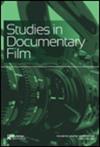Kati thanda - Eyre湖扬尘排放综述
IF 0.8
4区 综合性期刊
Q3 MULTIDISCIPLINARY SCIENCES
Transactions of the Royal Society of South Australia
Pub Date : 2022-01-02
DOI:10.1080/03721426.2022.2054918
引用次数: 3
摘要
Kati Thanda-Lake Eyre (KT-LE)位于澳大利亚尘埃输送系统的中心。卫星地图显示,较低的海峡国家/北部的KT-LE代表了一个全球尘埃热点-南半球最大的。这些尘埃的传播范围很广,有两条主要的羽流路径;东南,横跨塔斯曼海,南太平洋和南大洋,西北,皮尔巴拉/金伯利和印度洋。海相沉积记录表明,KT-LE在整个第四纪甚至更长时间内一直在释放粉尘,尽管与KT-LE直接相关的粉尘沉积只存在于过去的~ 55kyr。KT-LE的南段今天释放的尘埃很少;然而,古风成沉积物在南部湖缘和地幔中露头,表明在最后一次冰期循环中可能发生过主要的净尘埃收缩事件。净通缩的空间范围仍不确定。在湖泊沉积记录和远端尘埃记录中,只有一个30-15 ka的事件是明显的。在晚更新世,虽然估计表明KT-LE在过去80 ka和40 ka分别产生了13%和22%的澳大利亚粉尘负荷,但仍然难以量化KT-LE沉积物对澳大利亚粉尘负荷的贡献。现代/全新世的粉尘排放是周期性的,似乎与干湿循环有关,沉积物补给是一个关键因素。在晚更新世期间,对排放的控制不太清楚,但可能与湿度的大规模变化同时发生。尽管在KT-LE进行了80年的粉尘研究,但关于澳大利亚干旱中心的气候景观相互作用和粉尘产生,还有很多需要了解的。本文章由计算机程序翻译,如有差异,请以英文原文为准。
Dust emissions from Kati Thanda-Lake Eyre: a review
ABSTRACT Kati Thanda-Lake Eyre (KT-LE) sits at the heart of Australia’s dust transport system. Satellite mapping demonstrates that the lower Channel Country/northern KT-LE represents a global dust hotspot – the largest in the Southern Hemisphere. This dust is transported widely, with two dominant plume pathways; southeast, across the Tasman Sea, South Pacific Ocean and Southern Ocean, and northwest over the Pilbara/Kimberly and Indian Ocean. Marine sedimentary records imply KT-LE has been emitting dust throughout the Quaternary and potentially longer, although dust deposits linked directly to KT-LE exist only for the past ~55 kyr. The southern section of KT-LE emits little dust today; however, palaeo-aeolian sediments outcrop in, and mantle, the southern lake margins, pointing to the possibility of major net dust deflation episodes over the last glacial cycle. The spatial extent of net-deflation episodes remains uncertain. Only one event, at 30–15 ka, is evident in both lake sedimentary records and distal dust records. Over the late Pleistocene, it remains difficult to quantity the contribution of KT-LE sediment to Australia’s dust load, although estimates suggest KT-LE generated 13% and 22% of Australia’s dust load over the last 80 and 40 ka, respectively. Modern-day/Holocene dust emissions are periodic and appear coupled to arid-humid cycles, with sediment recharge a key contributing factor. During the late Pleistocene, controls on emissions are less clear, but likely coincided with large-scale changes in moisture. Despite 80 years of dust research at KT-LE, there remains much to learn about climate–landscape interactions and dust generation in Australia’s arid heart.
求助全文
通过发布文献求助,成功后即可免费获取论文全文。
去求助
来源期刊
CiteScore
1.40
自引率
12.50%
发文量
17
审稿时长
>12 weeks
期刊介绍:
Published since 1880, the Transactions of the Royal Society of South Australia is a multidisciplinary journal that aims to publish high quality, peer-reviewed papers of particular relevance to Australasia.
There is a particular focus on natural history topics such as: botany, zoology, geology, geomorphology, palaeontology, meteorology, geophysics, biophysics, soil science and environmental science, and environmental health. However, the journal is not restricted to these fields, with papers concerning epidemiology, ethnology, anthropology, linguistics, and the history of science and exploration also welcomed.
Submissions are welcome from all authors, and membership of the Royal Society of South Australia is not required.
The following types of manuscripts are welcome: Reviews, Original Research Papers, History of Science and Exploration, Brief Communications, Obituaries.

 求助内容:
求助内容: 应助结果提醒方式:
应助结果提醒方式:


